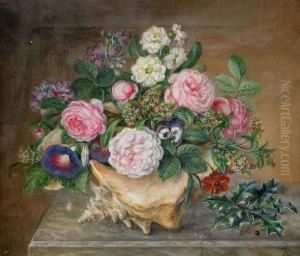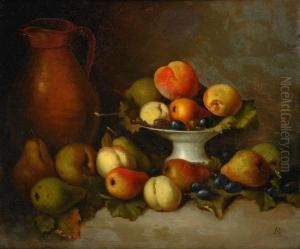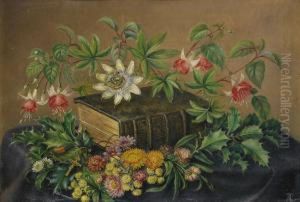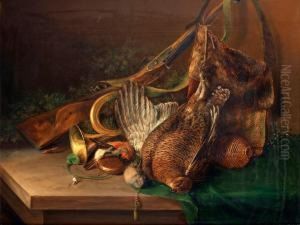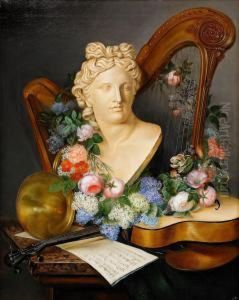Anna Augusta Plagemann Paintings
Anna Augusta Plagemann was an American artist born on August 26, 1856, in San Francisco, California. Despite the challenges of pursuing a career in the arts as a woman during the late 19th and early 20th centuries, Plagemann managed to carve out a space for herself as a painter. She was primarily known for her portraits, landscapes, and still-life paintings. Her work often reflected the aesthetics of the American Impressionists, characterized by loose brushwork and a bright palette that captured the effects of light.
Plagemann studied at the California School of Design, which later became the San Francisco Art Institute, a significant training ground for many artists of the region. Her education there would have provided her with a strong foundation in the academic traditions of art, while also exposing her to the burgeoning movements of Impressionism and Post-Impressionism. Her teachers included the likes of Virgil Williams and Raymond Dabb Yelland, both of whom were influential figures in the California art scene.
After her studies, Plagemann continued to live and work in San Francisco, contributing to the local arts community. She exhibited her work at various venues, such as the San Francisco Art Association, the Mechanics' Institute fairs, and the Mark Hopkins Institute of Art. Her exhibitions spanned several decades, from the 1870s into the 20th century, indicating that she maintained an active presence in the art world throughout her life.
In 1906, the great San Francisco earthquake and fire destroyed much of the city, including many artists' studios and galleries. It is possible that Plagemann lost some of her work during this disaster, as did many of her contemporaries. Despite this setback, she continued to paint and be involved in the city's rebuilding and cultural renaissance.
Anna Augusta Plagemann's contributions to the art world were significant not only for her own body of work but also for her role as a female artist during a period when women were often marginalized in the arts. She paved the way for future generations of women artists in the region. Plagemann passed away on July 13, 1923, in San Francisco. Though perhaps not as widely recognized as some of her male counterparts, her legacy endures through the paintings she left behind and her part in the development of the art scene in Northern California.
